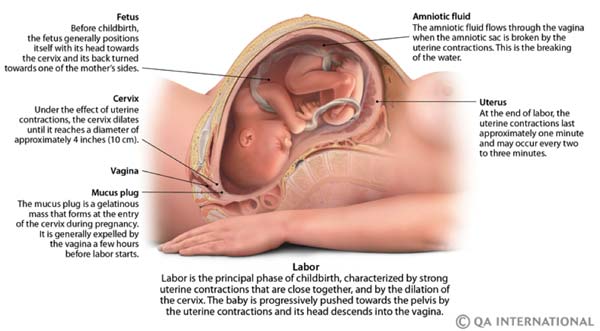Nine months of weird cravings, swollen breasts, squished lungs and no waistline leads up to the inevitable climatic point of pregnancy; labour. There are many rumours, myths and old wives tales that might make you feel unsettled, unprepared and downright terrified of this time-honoured rite of passage to motherhood.

Knowing what happens during labour and delivery can help relieve any fear or anxiety. Huggies has collected the following information, hints and tips to help prepare you for what is probably the most momentous event in your life.
PREPARING FOR LABOUR
Your big day is looming and it’s most likely going to be a roller coaster ride – scary and exciting all at the same time. One of the best ways you can ensure your labour is successful is proper preparation. You need to decide on several things in regard to your labour, including whether you will have a home birth or a birth in a hospital. Many hospitals give you a choice of going into a labour ward or a birthing centre. Birthing centres are usually for ‘natural’ births requiring no intervention and where the mother doesn’t want an epidural. Some have baths for water births.

If you do have a home birth, you will need to arrange a midwife. You may go into labour before or after your due date so it’s a good idea to start preparing a few weeks before your due date. You should get a hospital bag ready; this bag should be prepped way ahead of time. Some hospitals are a little pedantic about what you are and aren’t allowed into the hospital so it might be a good idea to check beforehand.
You should also ensure you have a car seat fitted for your little one’s journey home as well as nappies and baby clothes so your tot is comfortable and warm. It is a great idea to do a labour test run, where you get everything together and make a trip to the hospital. Many women are unsure about when labour actually starts, there are a couple of warning signs that signal the imminent onset of labour, but these signs can differ between women. Check out these signs and indicators in the signs of labour page so you are aware of what to look for. You should also understand that there are some different indicators for a premature birth, all these signs and symptoms are covered in Premature Birth: Signs and treatment of pre-term labour.
Labour can last a long time, and if you are relaxed about it, you should try to stay at home for as long as possible. If your contractions are arriving with 5 minutes intervals or less, if your water breaks, or you are bleeding, then it is a good time to make your way to the hospital. You should also have a reliable birth partner available to help you through the labour process. Here are the qualities and responsibilities that you should look for in a birth partner.
STAGES OF LABOUR
There are three distinct stages of labour, all with their own unique qualities and characteristics. Your first stage of labour is characterised by dilation of your cervix brought on by contractions. Your contractions will change from a dull cramp feeling into rhythmically occurring pain that comes at regular intervals. Due to this your cervix will become softer and more stretchy during its preparation for the baby. You should try to relax as much as possible and settle into a position that is comfortable for you. You should also go to the bathroom as often as possible to make sure your bladder is empty.
The second stage of labour is when your cervix is fully dilated, you push your baby down the birth canal and this stage ends with the birth. It helps to get into an upright position so that gravity can help the birth process. Don’t forget to breathe either! If you have had an epidural and can’t feel much, you need to listen carefully for instructions from your doctor or midwife.
Did you know that you are still in labour even after your baby is born? This is known as the third stage of labour. Your contractions might stop for a bit, giving you some false hope, but will start up again so that the placenta can be delivered (although they won’t be anywhere near as intense as your contraction from the first two stages). Some hospitals can give you an injection to nudge the placenta out of your body making the process easier for you. After you have ‘delivered’ the placenta, your midwife or doctor will check that everything is ok and that will pretty much be the end of your labour. Huggies has more detailed information on each stage of labour, so explore and get all the information to put your mind at ease

